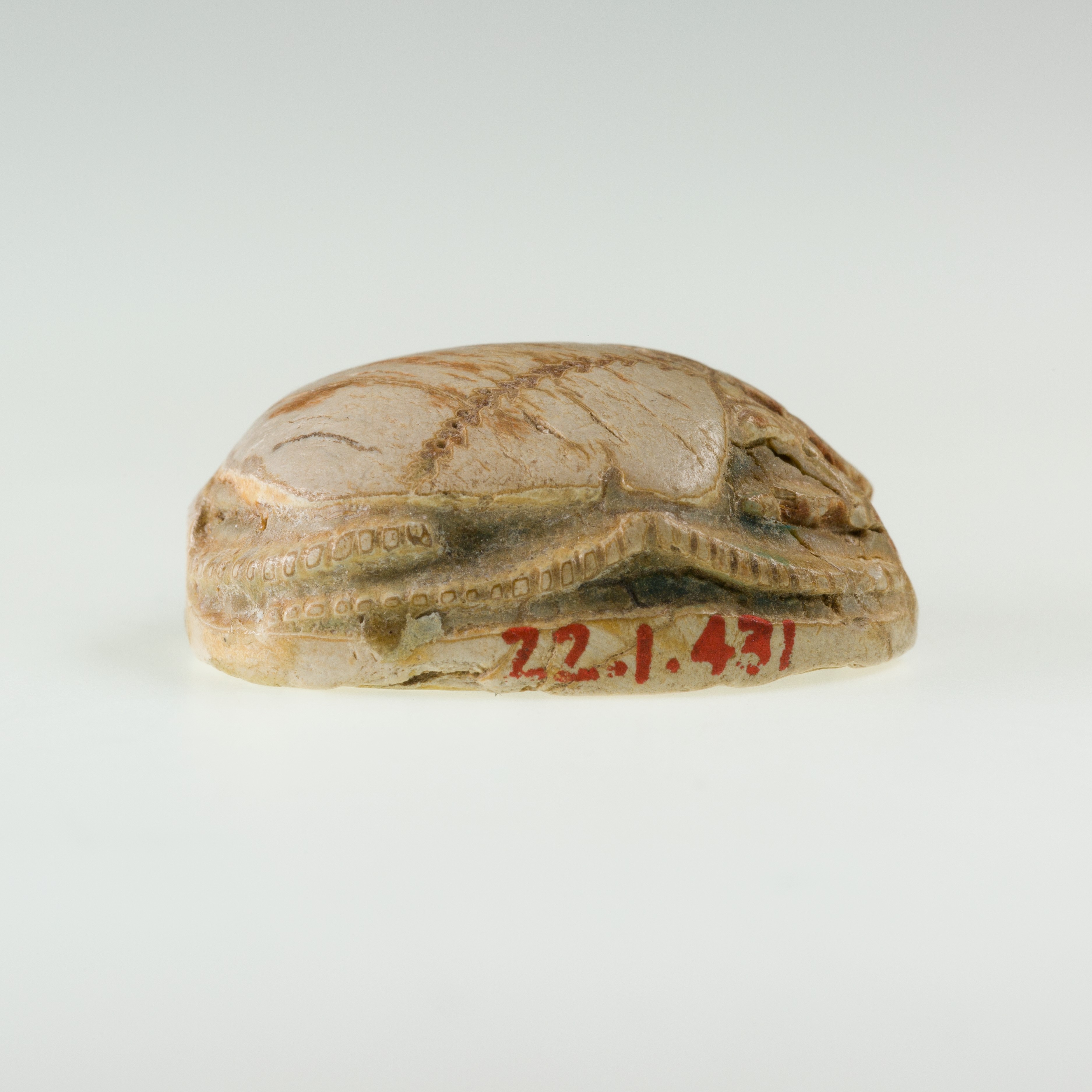Scarab with Sobek and Uraei
Second Intermediate Period
The wings of the scarab are not indicated, but the back is decorated with finely incised branches. This is a common feature on Canaanite scarabs of the Second Intermediate Period (late Middle Bronze Age, ca. 1700–1500 B.C.). The underside of the scarab shows a standing anthropomorphic figure with the head of a crocodile, holding a uraeus that faces him. Another uraeus rises up at his feet, facing away from the deity. A large basket (neb), decorated with vertical hatching, is placed below. Similar compositions generally show human figures or falcon-headed deities with uraei and neb-signs; crocodile-headed deities are not frequently depicted on scarabs during this period. Even though the scarab is of Canaanite manufacture, the figure most likely represents the Egyptian crocodile god Sobek. The fact that the motifs are decorated with hatching is also representative for this type of scarab. The design as well as the details on the back and legs of the scarab assign it to the later phase of the Middle Bronze Age (ca. 1640–1500 B.C.).
This image cannot be enlarged, viewed at full screen, or downloaded.
This artwork is meant to be viewed from right to left. Scroll left to view more.





